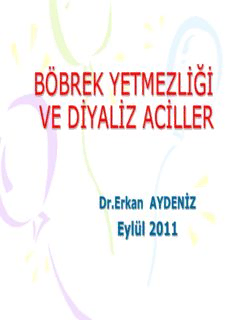
The child surveillance handbook PDF
Preview The child surveillance handbook
T h The e The C Child Surveillance h i Child Surveillance Handbook l d THIRD EDITION S u Handbook r Previous editions of the Handbook have built its reputation as the definitive guide to using child v surveillance to promote the health, welfare and life chances of children. This new edition remains as e authoritative as ever, whilst encompassing recent developments in the field. i l l THIRD EDITION Child surveillance programmes formerly centred on detecting potentially disabling abnormalities, and a the new edition still reflects this important goal. However, it is increasingly recognised that disadvantage, n educational failure and wasted lives are often due not to medical or biological disorders but adverse c social and economic circumstances and the mental health problems that accompany them. This Third e Edition reflects professionals’ increasing enthusiasm for applying this knowledge in new approaches to intervention. The book has therefore been extensively revised, including much completely new material, H to incorporate new research and evolving Government policy. It remains the essential child surveillance a n reference for GPs, general practice trainees, primary care nurses, health visitors, paediatricians and child d mental health staff. b o From reviews of previous editions: o k ‘I would recommend this handbook to all primary health care staff.’ Journal of Community Nursing ‘An essential reference book.’ GP T H ‘A well laid-out, helpful guide.’ Nursing Standard IRD E ‘Should be within easy reach of every baby clinic.’ Family Medicine D IT IO N Other books of related interest Looking After Children in Primary Care Paedophiles, Child Abuse and the Internet H A a companion to the children’s National Service a practical guide to identification, action and L Framework prevention L n Edited by Ruth Chambers and Kirsty Licence Adrian Powell W I Healthcare of Young People Fabricated or Induced Illness in a Child by a Carer L L promotion in primary care a reader I A Ann McPherson, Chris Donovan and Christopher Bools M Aidan Macfarlane S n The Other Side of ADHD E The Minor Illness Manual attention deficit hyperactivity disorder exposed and L L Third Edition explained I M Gina Johnson, Ian Hill-Smith and Chris Ellis Angela Southall A N K27803 6000 Broken Sound Parkway, NW ISBN: 978-1-84619-109-1 Suite 300, Boca Raton, FL 33487 90000 711 Third Avenue New York, NY 10017 DAVID HALL n JONATHAN WILLIAMS n DAVID ELLIMAN an informa business 2 Park Square, Milton Park Abingdon, Oxon OX14 4RN, UK 9 781846 191091 www.crcpress.com 9781846191091_hall_pb.indd 1 27/2/09 14:37:42 The Child Surveillance Handbook THIRD EDITION TThhiiss ppaaggee iinntteennttiioonnaallllyy lleefftt bbllaannkk The Child Surveillance Handbook THIRD EDITION DAVID HALL JONATHAN WILLIAMS and DAVID ELLIMAN CRC Press Taylor & Francis Group 6000 Broken Sound Parkway NW, Suite 300 Boca Raton, FL 33487-2742 © 2009 by David Hall, Jonathan Williams, and David Elliman CRC Press is an imprint of Taylor & Francis Group, an Informa business No claim to original U.S. Government works Version Date: 20160525 International Standard Book Number-13: 978-1-138-03096-1 (eBook - PDF) This book contains information obtained from authentic and highly regarded sources. While all reasonable efforts have been made to publish reliable data and information, neither the author[s] nor the publisher can accept any legal responsibility or liability for any errors or omissions that may be made. The publishers wish to make clear that any views or opinions expressed in this book by individual editors, authors or contributors are personal to them and do not necessarily reflect the views/opinions of the publishers. The information or guidance contained in this book is intended for use by medical, scientific or health-care professionals and is provided strictly as a supplement to the medical or other professional’s own judgement, their knowledge of the patient’s medical history, relevant manufacturer’s instructions and the appropriate best practice guidelines. Because of the rapid advances in medical science, any information or advice on dosages, procedures or diagnoses should be independently verified. The reader is strongly urged to consult the relevant national drug formulary and the drug companies’ and device or material manufacturers’ printed instructions, and their websites, before administering or utilizing any of the drugs, devices or materials mentioned in this book. This book does not indicate whether a particular treatment is appropriate or suit- able for a particular individual. Ultimately it is the sole responsibility of the medical professional to make his or her own professional judgements, so as to advise and treat patients appropriately. The authors and publishers have also attempted to trace the copyright holders of all material reproduced in this publication and apologize to copyright holders if permission to publish in this form has not been obtained. If any copyright material has not been acknowl- edged please write and let us know so we may rectify in any future reprint. Except as permitted under U.S. Copyright Law, no part of this book may be reprinted, reproduced, transmitted, or utilized in any form by any electronic, mechanical, or other means, now known or hereafter invented, including photocopying, microfilming, and recording, or in any information storage or retrieval system, without written per- mission from the publishers. For permission to photocopy or use material electronically from this work, please access www.copyright.com (http:// www.copyright.com/) or contact the Copyright Clearance Center, Inc. (CCC), 222 Rosewood Drive, Danvers, MA 01923, 978-750-8400. CCC is a not-for-profit organization that provides licenses and registration for a variety of users. For organizations that have been granted a photocopy license by the CCC, a separate system of payment has been arranged. Trademark Notice: Product or corporate names may be trademarks or registered trademarks, and are used only for identification and explanation without intent to infringe. Visit the Taylor & Francis Web site at http://www.taylorandfrancis.com and the CRC Press Web site at http://www.crcpress.com Contents Preface xi About the authors xiii Acknowledgements xiv 1 Child health promotion programmes 1 Defi ning the aims: what are we trying to achieve? 1 What determines how children develop? 2 Preventive health services for young children 5 Changing children’s life chances 7 Individuals and communities: social exclusion, social capital and community development 14 Child health programmes: practical issues 18 Parent-held records: the Personal Child Health Record 19 How do you know if you are making a difference? 21 References 23 2 Communication and consultation 25 A mental checklist 25 The parent-initiated consultation 26 The professional-initiated consultation: health promotion 28 Working with fathers 34 Readability 35 Culture, language and interpreters 36 Summary 38 References 38 3 Mental health, temperament and behaviour 39 Pregnancy: a time of mental preparation 39 Maternal bonding 40 Temperament 42 Maternal depression 43 Attachment and affectional bonding 46 Emotional and social development: clues to later mental health 50 Impact of day care 55 References 56 4 Safeguarding and promoting the welfare of children 58 Terminology 58 Prevention 59 Child protection 60 Categories of abuse 61 Child protection situations in community and primary care 68 Management of a case of suspected child abuse 70 The legal framework for child protection 74 Domestic violence and abuse – and the effect on children 76 Looked-after children 78 Fostering and adoption 79 The Common Assessment Framework 81 Common situations 82 References 84 5 Targeting services to specifi c needs 86 Young carers 86 Teenage mothers 87 Single parents 88 Assisted conception and multiple pregnancies 88 Working in multi-cultural communities 88 Parents with mental health problems 90 Deaf parents with a hearing child 90 Parents with a learning disability 91 Traveller families 91 Mothers in prison 92 Homeless families 92 Substance misuse 93 References 96 6 Nutrition 97 Breastfeeding 97 Complementary feeding 102 Diet for lactating mothers 103 Vitamin supplements for infants 103 Drugs and breastfeeding 105 Bottle-feeding 105 Formula-feeding: practical aspects 108 Weaning 110 Other aspects of nutrition 114 Common problems 116 Gastroenteritis 119 Toddler diarrhoea 120 Vomiting, possetting and regurgitation 121 Food and poverty 122 Prevention of dental disease 122 References 128 7 Growth 130 What determines how a child grows? 130 Measurement 131 Infant growth patterns: concepts and terminology 137 Problems with weight gain 138 Feeding problems associated with weaning 139 A three-pronged approach to assess and manage eating problems 140 Growth and child protection 142 Worries about height 142 Important causes of impaired growth 144 Obesity 145 Growth and the brain 148 Large heads 150 Small heads 151 References 151 8 Prevention of infectious diseases 153 Immunisation 153 Conjugate vaccines 155 Other vaccines 157 Contraindications to vaccination 157 Site of injection and technique 158 Storage of vaccines 158 Anaphylaxis 159 Why are high rates of vaccination not achieved more often? 161 Childhood vaccination: a checklist for staff 162 Patient group directions (PGDs) 163 Frequently asked questions 164 How to achieve high rates of vaccination 167 Other aspects of prevention of infectious diseases 168 Infectious diseases: important topics for primary care staff 170 References 174 9 Screening, surveillance, monitoring and assessment 176 Early detection: does it matter? 176 Early detection, assessment and diagnosis 177 Terminology 177 Screening tests for children under 5: the National Programme 179 Early detection of hearing impairment 181 Identifi cation of vision defects 184 Developmental and behavioural problems 187 Child mental health surveillance 196 UK policy for child health programmes 196 Primary care decisions 198 References 199 10 Birth to 6 months 200 Care and assessment of infants: an overview 200 Normal development in the fi rst 6 months 202 Common topics: birth to 6 months 213 Physical examination: newborn and 6–8 weeks old 217 Health education topics: the fi rst 8 weeks 228 Healthcare from 8 weeks to 6 months 231 References 232 11 6–12 months old 234 Normal development: 6–12 months 234 Motor development 237 Summary of topics to consider between 6 and 12 months 243 Problems and concerns 245 Health education topics 248 References 250 12 1–2 years 251 Normal development: 12–24 months 251 Important topics between 12 and 24 months 257 Common issues and concerns 258 Common management problems 271 Health education topics 277 References 278 13 2–5 years 280 Normal development: 2–5 years 280 Health and development reviews between 2 and 5 years 283 Common problems age 2–5 286 Children with slow or atypical development 290 Aspects of early literacy 296 Health education topics 298 References 300 14 Common behavioural and management problems 301 The importance of family structure and relationships 301 Emotional and behavioural problems in child health surveillance 303 Issues in normal family functioning 305 Behavioural and management problems 312 Sleep problems 312 Hyperactivity 323 Aggressive behaviour 325 Eating problems 328 Bedwetting 330 Problems with defecation 335 Incentive schemes 338 References 342 15 Families and children with special needs 343 Infants born prematurely 343 Children with disabilities and long-term problems 344 Bereavement 352 References 355 Appendix 1: Hearing tests for young children 357 Terminology and defi nitions 357 Principles of tests 357 Appendix 2: Examination of the eyes 359 Examining eye movements 359 Visual acuity tests 362 Single-letter tests 362 Index 365
The list of books you might like

What Happened to You?

$100m Offers

The Strength In Our Scars

Credence

Bioinformatics for Everyone

Lars Gustaf Andersson 2012-01-13
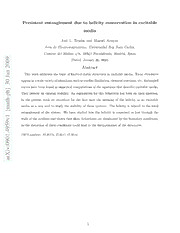
Persistent entanglement due to helicity conservation in excitable media
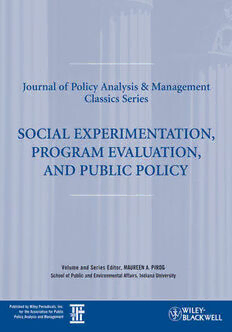
Social Experimentation, Program Evaluation, and Public Policy
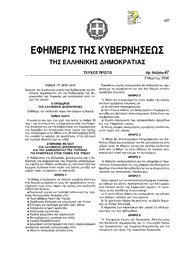
Greek Government Gazette: Part 1, 2006 no. 47
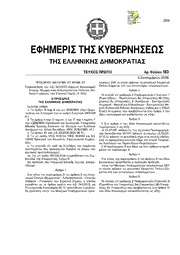
Greek Government Gazette: Part 1, 2006 no. 183

Vitis vinifera subsp. vinifera cv. Caladoc
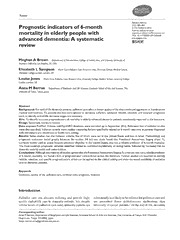
Prognostic indicators of 6-month mortality in elderly people with advanced dementia: A systematic review.
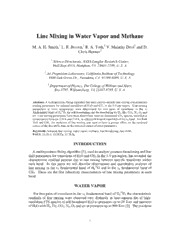
Line Mixing in Water Vapor and Methane

Long Lived States In Collisions
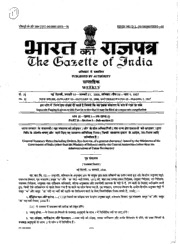
Gazette of India, 2006, No. 207
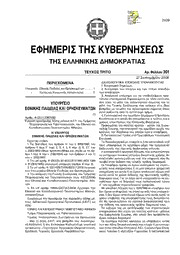
Greek Government Gazette: Part 3, 2006 no. 301

Landschaftsfotografie Tutorial: Trainingsbuch zum Fotografieren lernen (German Edition)

The Art of Selfishness
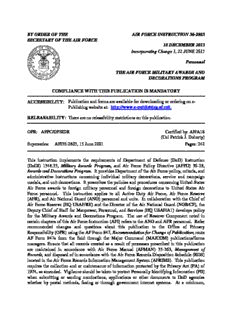
BY ORDER OF THE SECRETARY OF THE AIR FORCE AIR FORCE INSTRUCTION 36-2803 18 ...

Die Klavierspielerin: Lektüre- Und Interpretationshilfe

Modern Drummer Issue 381
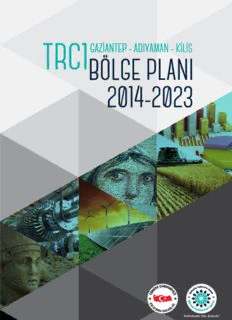
bölge planı tanımı ve planın hazırlanma süreci 7
